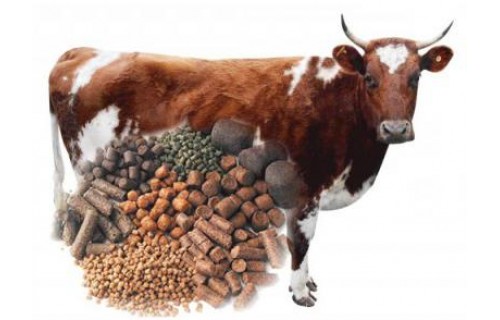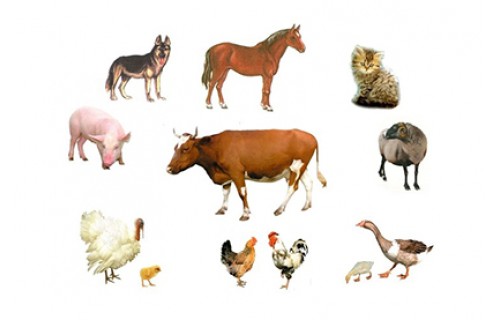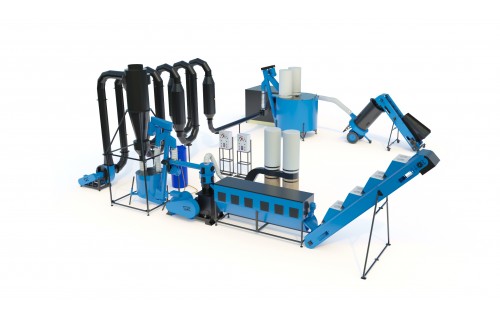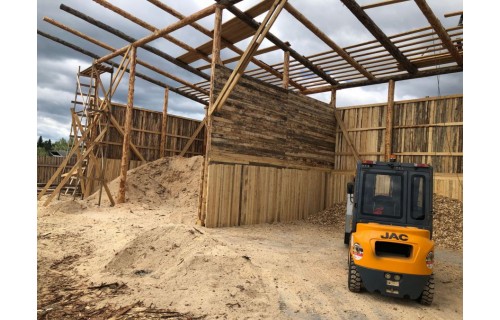First start-up of the granulator. The process of running-in the matrix
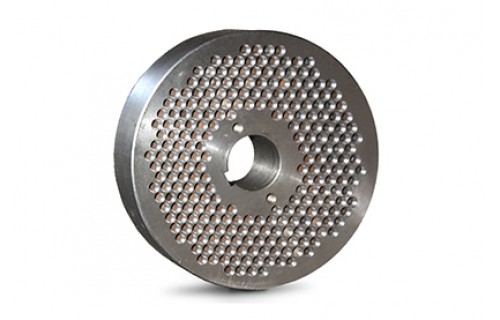
When the granulator is first started, there is a high probability of obtaining low-quality granulate or a dry mix. This can cause the die to become blocked with raw material, regardless of its type. The reason for this is the unpolished inner surface of the die holes.
We will look at the causes of this phenomenon and how to solve them:
First: The granulator is new, and therefore the matrix in it is also new (unpolished), therefore it must be polished (the channels in the matrix must be polished) with a special mixture. The manufacturer does not carry out this procedure, because after polishing the matrix would lose its appearance. However, if necessary, polishing the matrix is possible during production, which is agreed and performed additionally.
Granulator matrix polishing procedure:
1. 5 kg of fine wheat middlings (sifted, without flour) or wheat seeds (fraction no larger than 2 mm). Add oil (approx. 1.5 l). The mixture should be viscous and uniform. When squeezed in the hand, the oil slightly separates from the polishing mixture, but does not leak. To do this, it is necessary to leave the mixture for about 20 minutes so that it soaks up the oil. On granulators with a matrix Ø of over 150 mm, the volume of the mixture should be increased by half, maintaining the given proportion.
2. This mixture should be granulated cyclically in small portions, collecting it at the outlet and feeding it to the hopper, gradually adding construction sand to the mixture in a ratio of 1 kg per 5 kg of feed. The first time, the mixture without sand should be passed through the granulator, then the resulting product should be collected, 150 g of sand for every 5 kg added to it, mixed well and re-poured in portions into the granulator hopper. Granulate until all the sand is added to the mixture and the granulate begins to pour out evenly (up to 2 hours of work, depending on the matrix).
3. After 30 minutes of grinding, sprinkle the rollers with oil (about 10 g), repeat after a while. During the grinding process, an additional 150-200 g of oil should be used to lubricate the rollers.
4. After some time, when the polishing mixture turns into flour and starts to stick, add another 1 kg of grit or grain (to make the mixture loose), leave for 30 minutes and continue grinding.
IMPORTANT – do not add water under any circumstances, otherwise the mixture will stick together and block the matrix.
Once the matrix has been polished, you can work with other feeds, sawdust and other raw materials.
Second: The raw materials should be evenly moistened by 15%. Without specialist equipment, this can be done as follows: spread on a surface that does not allow water to pass through and sprinkle the feed with a regular sprayer. Leave for 30 minutes so that the feed mixture absorbs moisture. The granulated feed will be moist. During operation, the matrix heats up to 80 degrees Celsius, thanks to which the feed in the granulator undergoes heat treatment and thus dries. If necessary, spread the granulate on a flat surface for natural drying. The feed (raw materials) fraction should be 1 mm smaller than the diameter of the matrix holes.
Third: the feed should be fed evenly, about 100-400 g at a time, depending on the model (visually, the rollers should be immersed in the raw materials by 1/3 of their height).
Fourth: pelletizers with a matrix of Ø 100 mm are not intended for the production of fuel pellets. Hay and chaff can be pelletized by mixing them with a grain feed mixture (60% hay, 40% feed mixture).
IMPORTANT – a gap of 0.1-0.15 mm should be maintained between the die and the rollers. This will significantly increase the service life of the die and the granulator components.
In the generally available operating conditions of granulators, the gap is set to the thickness of 2 sheets of A4 paper with a density of 80 g/cm2. A necessary condition is that the roller should touch the sheet with a tooth, not a groove. This method is used on new rollers and the matrix. On used parts, the rollers should be set relative to the matrix until they start to rotate, rotating the matrix "by hand".
Principles of working with a granulator
1. Set the gap between the die and the rollers;
2. Adjust the ejector according to the thickness and the die and the installed intermediate sleeve;
3. Fill the feed mixture;
4. Turn on the press electric motor;
5. Set the cutting tool to the required granulate length;
6. Evenly feed the raw materials into the working area in small portions so as not to overload the electric motor and not allow it to stop or the belts to slip;
7. Repeat this process until the die heats up and the load on the press motor stabilizes. Then gradually increase the product feed and bring the load on the press electric motor to the nominal product feed. Feed the raw materials taking into account the above recommendations (the layer of raw materials covers 1/3 of the roller height, approximately 100-400 g at a time, depending on the matrix diameter);
8. Monitor the quality of the granulate. Fresh granulate can be easily distinguished from that which has been in the die holes for a long time, which has changed its shade to dark green or even black and has a characteristic shine;
9. If the obtained granulate is relatively hard, but a large percentage of the non-granulated part of the raw materials can be observed, the amount of water supplied should be increased (try to evenly moisten the feed by spraying). Water should be supplied until the number of non-granulated parts of the raw materials is minimized and the surface of the granulate is still shiny.
10. Granulate with a shiny surface may come out soft and this is not a sign of low quality products, because after cooling the granulate hardens quickly. If the load on the electric motor decreases after adding water, the supply of raw materials can be increased;
11. If the amount of non-granulated part of the raw materials is minimal, but the surface of the granulate is rough, it means that the product has been too moistened. In such a case, either the amount of water supplied should be reduced or the supply of raw materials should be gradually increased. The moisture percentage and the proportion of raw material feed depend on the type of raw materials, the matrix and the product itself.

